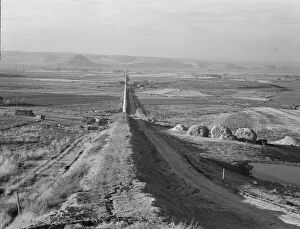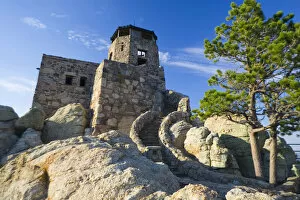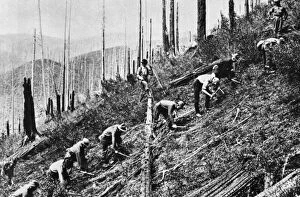Civilian Conservation Corps Collection
"The Civilian Conservation Corps: Preserving Nature and Building a Better Future" In 1939
All Professionally Made to Order for Quick Shipping
"The Civilian Conservation Corps: Preserving Nature and Building a Better Future" In 1939, Dorothea Lange captured the remarkable sight of the longest siphon in the world crossing the picturesque Malheur Valley in Oregon. This engineering marvel carried water for an impressive five miles to Dead Ox Flat, showcasing the ingenuity and dedication of the Civilian Conservation Corps (CCC). The CCC was a part of President Franklin D. Roosevelt's New Deal initiative during the Great Depression. Its mission was two-fold: to provide employment opportunities for young men and to conserve America's natural resources. The impact of their work can still be seen today. One such example is found in Zion National Park, Utah, where East Temple majestically rises above frosted cattails and a bridge over Pine Creek - a testament to both nature's beauty and CCC's commitment to preserving it. Moving along the coast, we find ourselves at Cape Perpetua Scenic Area in Oregon. Here stands a shelter built by CCC workers that overlooks breathtaking vistas. These structures not only provided refuge for visitors but also served as lasting reminders of their hard work. Returning to Oregon's Malheur County, we encounter once again that extraordinary siphon - stretching five miles across rugged terrain towards Dead Ox Flat. It symbolizes how CCC transformed barren landscapes into thriving ecosystems by providing vital water sources. The impact of CCC extended far beyond Oregon; it reached South Dakota as well. In Black Elk Wilderness stands a stone watchtower constructed by these dedicated individuals who understood that protecting our natural heritage required constant vigilance. Traveling further east brings us to Theodore Roosevelt National Park in North Dakota, where another overlook built by CCC offers panoramic views of Little Missouri River valley - evidence that they not only conserved but also enhanced our nation's scenic wonders. Not limited solely to conservation efforts, CCC also focused on education and skill-building. Young men were given the opportunity to study motor mechanics at the Central Repair Shop in Salem, Virginia.












